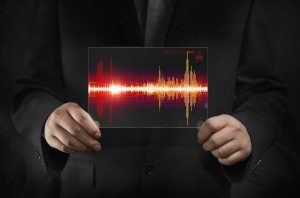
We live in a world of noise.
For many of us we shock ourselves to consciousness each morning through the shrill of an alarm. Whether it’s a good old-fashioned alarm clock or more likely our mobile phone, several hours of deep slumber is jarred by noise. Some of us will immediately reach for our mobile phone to make sure we haven’t missed any important noise while we slept. Others will grab the T.V remote and the first sound they hear is the voice of Piers Morgan.
From there on in the rest of our day is filled with noise.
The mindful presenter is acutely aware of the cacophony that fills our days and the last thing they want to do when they stand to present is add to the bedlam. They carefully craft and deliver a presentation meticulously designed to maximise your signal to noise ratio.
What is that?
Signal-to-noise ratio is a measure used in engineering that compares the level of a desired signal to the level of background noise.
When you are presenting your signal is your message. Everything that that doesn’t support, add value to, or help animate your message is noise. Given that it’s been suggested that the human mind is conditioned to wander 47% of the time it’s critical that presenters focus on reducing the noise.
Where is the noise?
At Mindful Presenter all of our presentation skills training, public speaking courses and communication skills coaching is focused on speaking with clarity, purpose and impact.
The noise can be found in a multitude of places:
– The company logo on every slide
– Animation – Grow and turn, fade in, wheel, sound effects
– Inappropriate charts, graphs and tables
– Bullet points
– 3D
– Icons
– Text that the audience reads whilst the presenter speaks
– The presenter’s ego
– Waffling
– Irrelevant, boring stories
– Information the audience already knows or can Google easily themselves
The challenge
Noise in a presentation is a huge distraction and it is incumbent on every presenter to do whatever it takes to to maximise your signal to noise ratio. In other words, our task is to remove every element of distraction that interferes with our signal.
Where do you start?
The starting point is finding your signal; your message. If you can’t articulate your message with absolute clarity then it’s likely that you will craft and deliver a presentation that will be fraught with noise.
Begin by writing down your message and honing it until it is clear, concise and compelling. Ask yourself whether your audience will:
– Understand it
– Remember it?
– See it as making a difference to them
If you can’t answer each of these questions with a resounding yes then you have to go back to the drawing board.
Once you have your signal give some careful thought to everything you later plan to say to and show your audience.
If it doesn’t support your message and isn’t aligned to your objective of being clear, concise and compelling then you can be sure it’s noise and it will interfere with your signal.
Caveat
What looks, feels and sounds right to you may still appear as a distraction to your audience. Don’t leave it to chance, share this article with someone your trust to help you, deliver your presentation to them and ask them to point out the noise.
Crucially, ask them if they received your signal, understand and will remember your message.
If you need help cutting out the noise when presenting:
– Book yourself onto a powerful public speaking course.
– Invest in some really good one to one public speaking coaching.
– Get yourself some excellent presentation training
Image courtesy of: istockphoto.com

Leave a comment